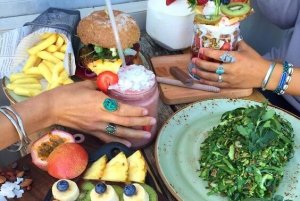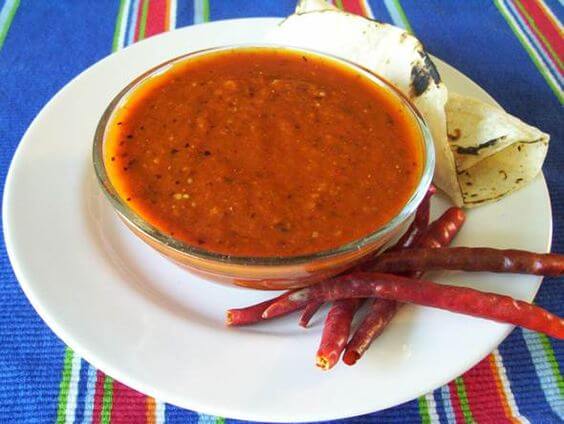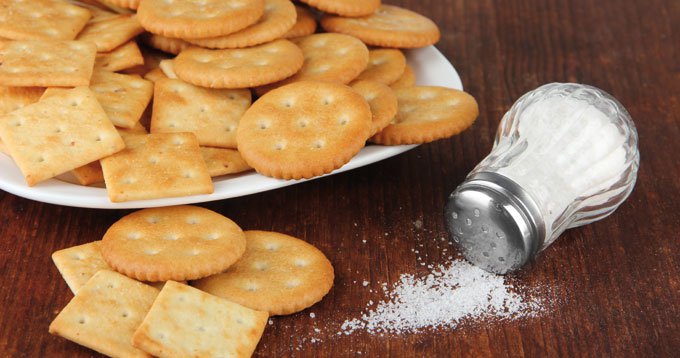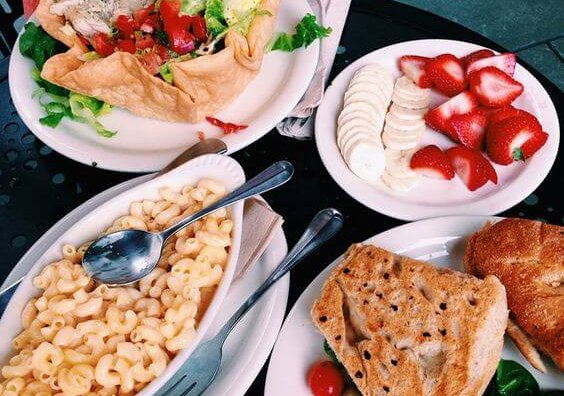Cravings: Tell Me What You Want to Eat, and I'll Tell You How You Feel

Human beings express our emotions in our relationship with food. Here we’re talking about repressed emotions. The ones that we’re not always conscious of or accept.
And, since repression is never total, these emotions often rise to the surface eventually. And the truth is, they are often expressed in how we eat or what we eat.
For us humans, food is much more than a biological necessity. From a symbolic point of view, it has to do with all things maternal. It has to do with how we love and are loved. Our way of relating to the world.
A person who refuses to eat is, in a way, expressing a desire to stop living. Someone who eats too much, on the other hand, betrays a desire to survive a real or imagined threat.
“Society is divided into two large groups: those who have more food than appetite and those who have more appetite than food.”
–Chamfort-
What we eat also says something about how we feel. In theory, any food that is well-prepared should taste good to us because it gives us nutrition. However, without knowing why, we enjoy some foods more than others.
Dr. Deanna Minich took on the task of deciphering the hidden emotions behind “cravings” from her perspective as a nutritionist. This is what she discovered.
Spicy food and sadness
The word “spicy” isn’t only applied to food. It can also describe situations or people who generate enthusiasm or excitement. To “spice it up” is to add a dose of interest or excitement. It isn’t a coincidence that we use the word like this.

According to Dr. Minich, we crave spicy food when we’re sad. Some people eat things that are so spicy it brings them to tears. We want spicy food because we want emotion, intensity, and excitement in our lives.
But we don’t realize this is what we truly want — or we do know but we’re afraid to do new things. We compensate for this unfulfilled desire by eating spicy food.
Baked goods and suffocating routines
This category includes cakes, pies, cookies, etc. It’s one of the cravings we experience most often, and one of the biggest contributing factors to obesity around the globe. Some people are obsessed with baked goods and pastries. Why?
People who have cravings for these foods are people whose daily routine exhausts them. They turn to carbohydrates to compensate for lost energy. They look for sweets so they can recover, symbolically, the joy that is missing from their lives.
Fans of salty foods
Many foods have an appropriate level of salt, and it is not “to taste”, as many recipes say. The correct amount of salt improves the meal, it doesn’t take over the other flavors.
However, there are those who add a pinch of salt to everything. They reject the sweet and they adore everything salty.

According to the study we’ve been talking about, people who constantly crave salt suffer from internal agitation. They may be anguished or anxious. Salt activates the movement of water within their body, so eating salty foods is a way to manifest internal restlessness.
Craving crunchy food
If we look at it closely, lovers of crunchy foods don’t love them because of the flavor, but because of the “crunch.” They make no effort to hide the crunch, either. On the contrary, they like it.
In this case, the repressed emotion may be anger. Chewing those foods and enjoying their texture and sound is a way of “growling” or otherwise showing anger. It’s also a good way to get attention when we feel we’re feeling ignored.
Soft starches
Some foods attract us because they feel soft in our mouths. Foods like rice, pasta, and bread have a feeling of softness, like eating a pillow.

People who crave these foods want to be comforted, protected, and loved. The fluffy texture of these foods gives a physiological sensation similar to that of being embraced. We crave comfort food when we’re going through a tough time.
This relationship between food and our unconscious emotions is more than anecdotal. While it does not completely explain our subconscious, it does offer important clues that are worth paying attention to. We all have repressed emotions, and we all succumb to cravings from time to time.
Human beings express our emotions in our relationship with food. Here we’re talking about repressed emotions. The ones that we’re not always conscious of or accept.
And, since repression is never total, these emotions often rise to the surface eventually. And the truth is, they are often expressed in how we eat or what we eat.
For us humans, food is much more than a biological necessity. From a symbolic point of view, it has to do with all things maternal. It has to do with how we love and are loved. Our way of relating to the world.
A person who refuses to eat is, in a way, expressing a desire to stop living. Someone who eats too much, on the other hand, betrays a desire to survive a real or imagined threat.
“Society is divided into two large groups: those who have more food than appetite and those who have more appetite than food.”
–Chamfort-
What we eat also says something about how we feel. In theory, any food that is well-prepared should taste good to us because it gives us nutrition. However, without knowing why, we enjoy some foods more than others.
Dr. Deanna Minich took on the task of deciphering the hidden emotions behind “cravings” from her perspective as a nutritionist. This is what she discovered.
Spicy food and sadness
The word “spicy” isn’t only applied to food. It can also describe situations or people who generate enthusiasm or excitement. To “spice it up” is to add a dose of interest or excitement. It isn’t a coincidence that we use the word like this.

According to Dr. Minich, we crave spicy food when we’re sad. Some people eat things that are so spicy it brings them to tears. We want spicy food because we want emotion, intensity, and excitement in our lives.
But we don’t realize this is what we truly want — or we do know but we’re afraid to do new things. We compensate for this unfulfilled desire by eating spicy food.
Baked goods and suffocating routines
This category includes cakes, pies, cookies, etc. It’s one of the cravings we experience most often, and one of the biggest contributing factors to obesity around the globe. Some people are obsessed with baked goods and pastries. Why?
People who have cravings for these foods are people whose daily routine exhausts them. They turn to carbohydrates to compensate for lost energy. They look for sweets so they can recover, symbolically, the joy that is missing from their lives.
Fans of salty foods
Many foods have an appropriate level of salt, and it is not “to taste”, as many recipes say. The correct amount of salt improves the meal, it doesn’t take over the other flavors.
However, there are those who add a pinch of salt to everything. They reject the sweet and they adore everything salty.

According to the study we’ve been talking about, people who constantly crave salt suffer from internal agitation. They may be anguished or anxious. Salt activates the movement of water within their body, so eating salty foods is a way to manifest internal restlessness.
Craving crunchy food
If we look at it closely, lovers of crunchy foods don’t love them because of the flavor, but because of the “crunch.” They make no effort to hide the crunch, either. On the contrary, they like it.
In this case, the repressed emotion may be anger. Chewing those foods and enjoying their texture and sound is a way of “growling” or otherwise showing anger. It’s also a good way to get attention when we feel we’re feeling ignored.
Soft starches
Some foods attract us because they feel soft in our mouths. Foods like rice, pasta, and bread have a feeling of softness, like eating a pillow.

People who crave these foods want to be comforted, protected, and loved. The fluffy texture of these foods gives a physiological sensation similar to that of being embraced. We crave comfort food when we’re going through a tough time.
This relationship between food and our unconscious emotions is more than anecdotal. While it does not completely explain our subconscious, it does offer important clues that are worth paying attention to. We all have repressed emotions, and we all succumb to cravings from time to time.
All cited sources were thoroughly reviewed by our team to ensure their quality, reliability, currency, and validity. The bibliography of this article was considered reliable and of academic or scientific accuracy.
- Aucoin, M., LaChance, L., Naidoo, U., Remy, D., Shekdar, T., Sayar, N., Cardozo, V., Rawana, T., Chan, I., & Cooley, K. (2021). Diet and Anxiety: A Scoping Review. Nutrients, 13(12), 4418. https://www.ncbi.nlm.nih.gov/pmc/articles/PMC8706568/
- Betancourt-Núñez, A., Torres-Castillo, N., Martínez-López, E., De Loera-Rodríguez, C. O., Durán-Barajas, E., Márquez-Sandoval, F., Bernal-Orozco, M. F., Garaulet, M., & Vizmanos, B. (2022). Emotional Eating and Dietary Patterns: Reflecting Food Choices in People with and without Abdominal Obesity. Nutrients, 14(7), 1371. https://www.ncbi.nlm.nih.gov/pmc/articles/PMC9002960/
- Better Health Channel. (2023, 3 de junio). Food and your mood. Consultado el 4 de junio de 2023. https://www.betterhealth.vic.gov.au/health/healthyliving/food-and-your-mood
- Bongers, P., & Jansen, A. (2016). Emotional Eating Is Not What You Think It Is and Emotional Eating Scales Do Not Measure What You Think They Measure. Frontiers in psychology, 7, 1932. https://www.ncbi.nlm.nih.gov/pmc/articles/PMC5143883/
- Corsica, J., Hood, M. M., Katterman, S., Kleinman, B., & Ivan, I. (2014). Development of a novel mindfulness and cognitive behavioral intervention for stress-eating: a comparative pilot study. Eating behaviors, 15(4), 694-699. https://www.sciencedirect.com/science/article/abs/pii/S1471015314001135
- Chan, J. S. Y., Liu, G., Liang, D., Deng, K., Wu, J., & Yan, J. H. (2019). Special Issue – Therapeutic Benefits of Physical Activity for Mood: A Systematic Review on the Effects of Exercise Intensity, Duration, and Modality. The Journal of psychology, 153(1), 102–125. https://pubmed.ncbi.nlm.nih.gov/30321106/
- Firth, J., Gangwisch, J. E., Borisini, A., Wootton, R. E., & Mayer, E. A. (2020). Food and mood: how do diet and nutrition affect mental wellbeing?. BMJ (Clinical research ed.), 369, m2382. https://www.ncbi.nlm.nih.gov/pmc/articles/PMC7322666/
- Fuente González, C. E., Chávez-Servín, J. L., de la Torre-Carbot, K., Ronquillo González, D., Aguilera Barreiro, M. L. Á., & Ojeda Navarro, L. R. (2022). Relationship between Emotional Eating, Consumption of Hyperpalatable Energy-Dense Foods, and Indicators of Nutritional Status: A Systematic Review. Journal of obesity, 2022, 4243868. https://www.ncbi.nlm.nih.gov/pmc/articles/PMC9132695/
- Głąbska, D., Guzek, D., Groele, B., & Gutkowska, K. (2020). Fruit and Vegetable Intake and Mental Health in Adults: A Systematic Review. Nutrients, 12(1), 115. https://pubmed.ncbi.nlm.nih.gov/31906271/
- Godet, A., Fortier, A., Bannier, E., Coquery, N., & Val-Laillet, D. (2022). Interactions between emotions and eating behaviors: Main issues, neuroimaging contributions, and innovative preventive or corrective strategies. Reviews in Endocrine and Metabolic Disorders, 23(4), 807-831. https://link.springer.com/article/10.1007/s11154-021-09700-x
- Lachance, L., & Ramsey, D. (2015). Food, mood, and brain health: implications for the modern clinician. Missouri medicine, 112(2), 111–115. https://www.ncbi.nlm.nih.gov/pmc/articles/PMC6170050/
- Lang, U. E., Beglinger, C., Schweinfurth, N., Walter, M., & Borgwardt, S. (2015). Nutritional aspects of depression. Cellular physiology and biochemistry : international journal of experimental cellular physiology, biochemistry, and pharmacology, 37(3), 1029–1043. https://pubmed.ncbi.nlm.nih.gov/26402520/
- Ljubičić, M., Matek Sarić, M., Klarin, I., Rumbak, I., Colić Barić, I., Ranilović, J., Dželalija, B., Sarić, A., Nakić, D., Djekic, I., Korzeniowska, M., Bartkiene, E., Papageorgiou, M., Tarcea, M., Černelič-Bizjak, M., Klava, D., Szűcs, V., Vittadini, E., Bolhuis, D., & Guiné, R. P. F. (2023). Emotions and Food Consumption: Emotional Eating Behavior in a European Population. Foods (Basel, Switzerland), 12(4), 872. https://www.ncbi.nlm.nih.gov/pmc/articles/PMC9957014/
- Macht, M. (2008). How emotions affect eating: A five-way model. Appetite, 50(1), 1-11.https://www.sciencedirect.com/science/article/abs/pii/S0195666307003236
- Muscaritoli M. (2021). The Impact of Nutrients on Mental Health and Well-Being: Insights From the Literature. Frontiers in nutrition, 8, 656290. https://www.ncbi.nlm.nih.gov/pmc/articles/PMC7982519/
- Paans, N. P., Bot, M., Brouwer, I. A., Visser, M., Roca, M., Kohls, E., … & Penninx, B. W. (2018). The association between depression and eating styles in four European countries: The MooDFOOD prevention study. Journal of psychosomatic research, 108, 85-92. https://www.sciencedirect.com/science/article/abs/pii/S002239991731190X
- Parmentier, F. B. R., García-Toro, M., García-Campayo, J., Yañez, A. M., Andrés, P., & Gili, M. (2019). Mindfulness and Symptoms of Depression and Anxiety in the General Population: The Mediating Roles of Worry, Rumination, Reappraisal and Suppression. Frontiers in psychology, 10, 506. https://www.ncbi.nlm.nih.gov/pmc/articles/PMC6418017/
- Schnepper, R., Georgii, C., Eichin, K., Arend, A. K., Wilhelm, F. H., Vögele, C., … & Blechert, J. (2020). Fight, flight,–or grab a bite! trait emotional and restrained eating style predicts food cue responding under negative emotions. Frontiers in behavioral neuroscience, 14, 91. https://www.frontiersin.org/articles/10.3389/fnbeh.2020.00091/full
This text is provided for informational purposes only and does not replace consultation with a professional. If in doubt, consult your specialist.







